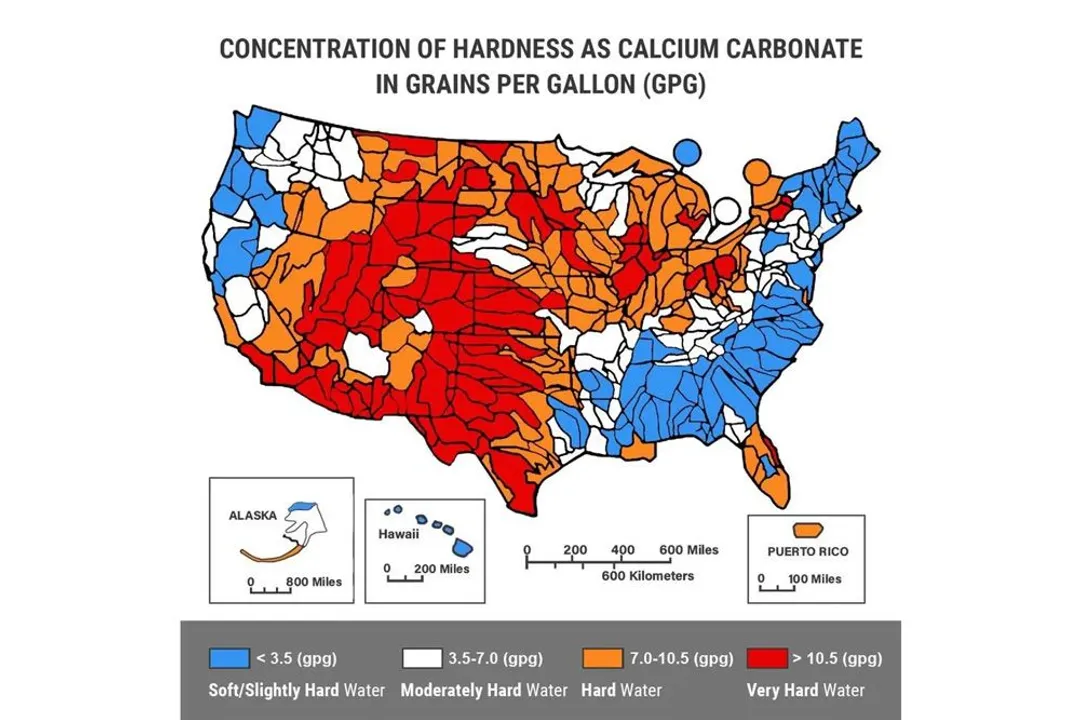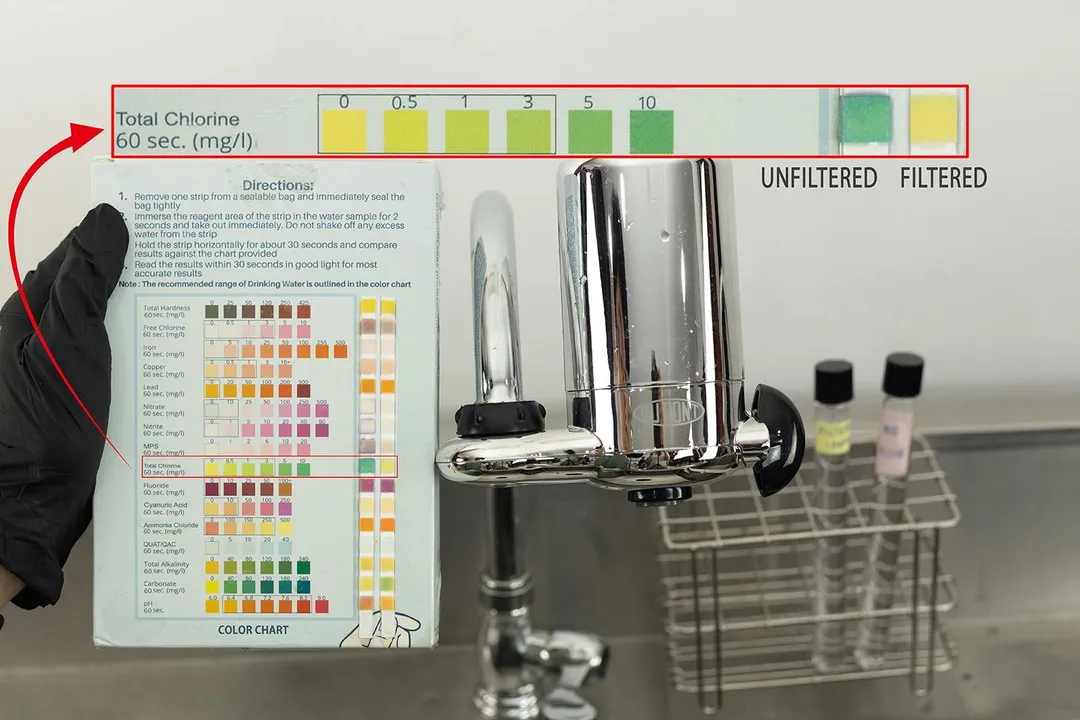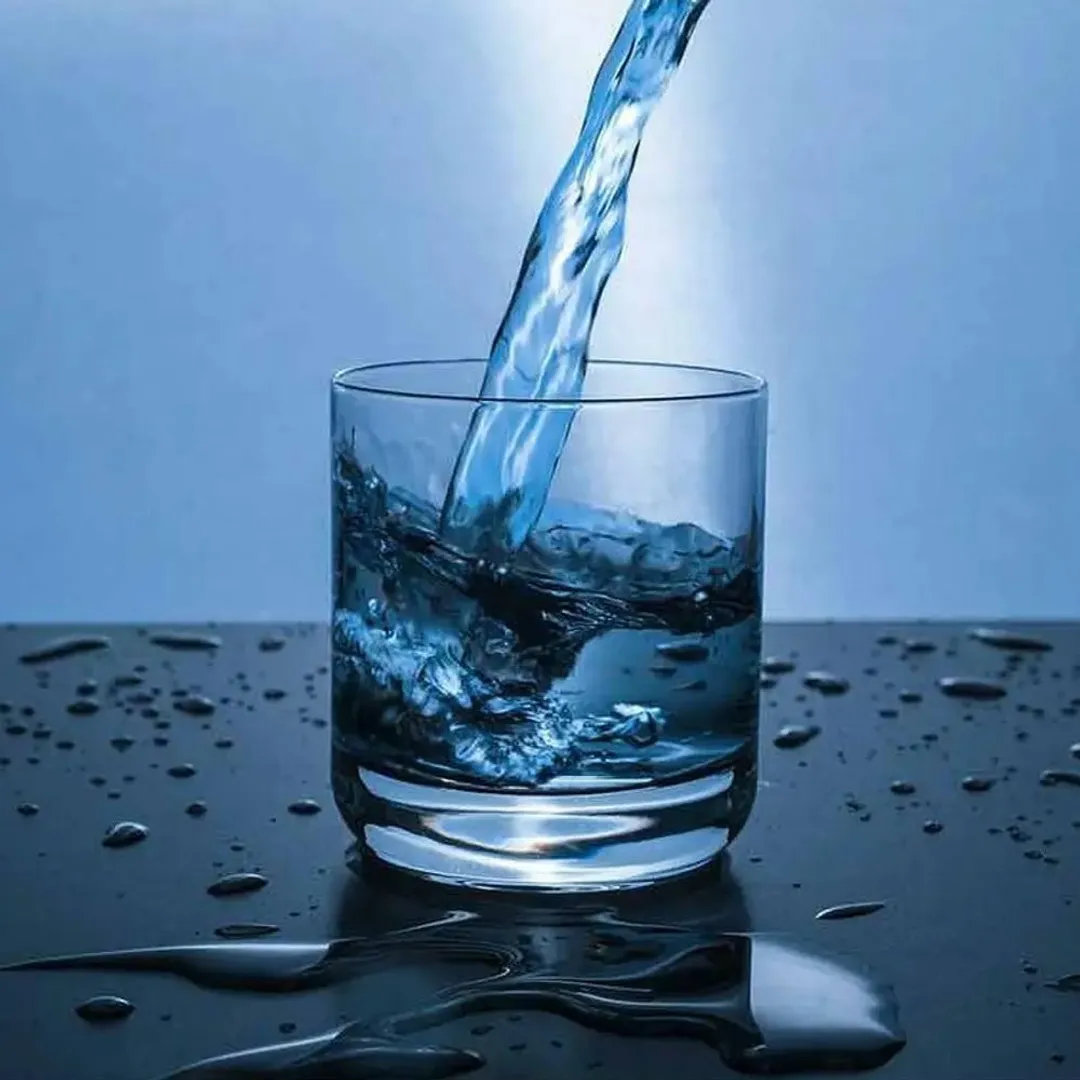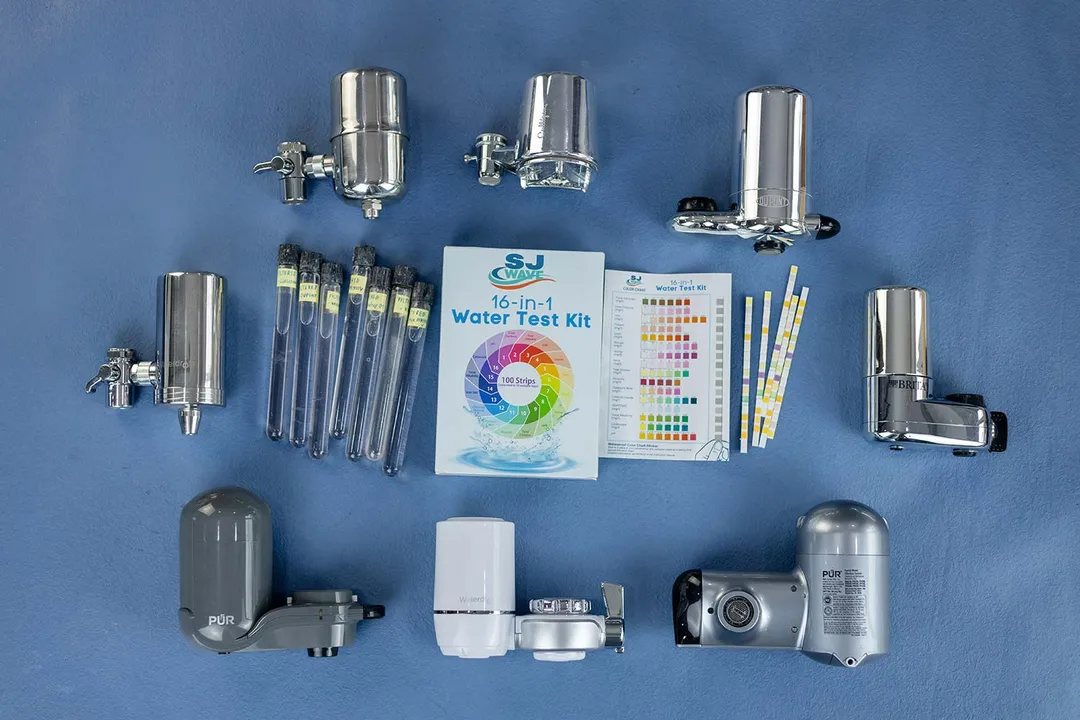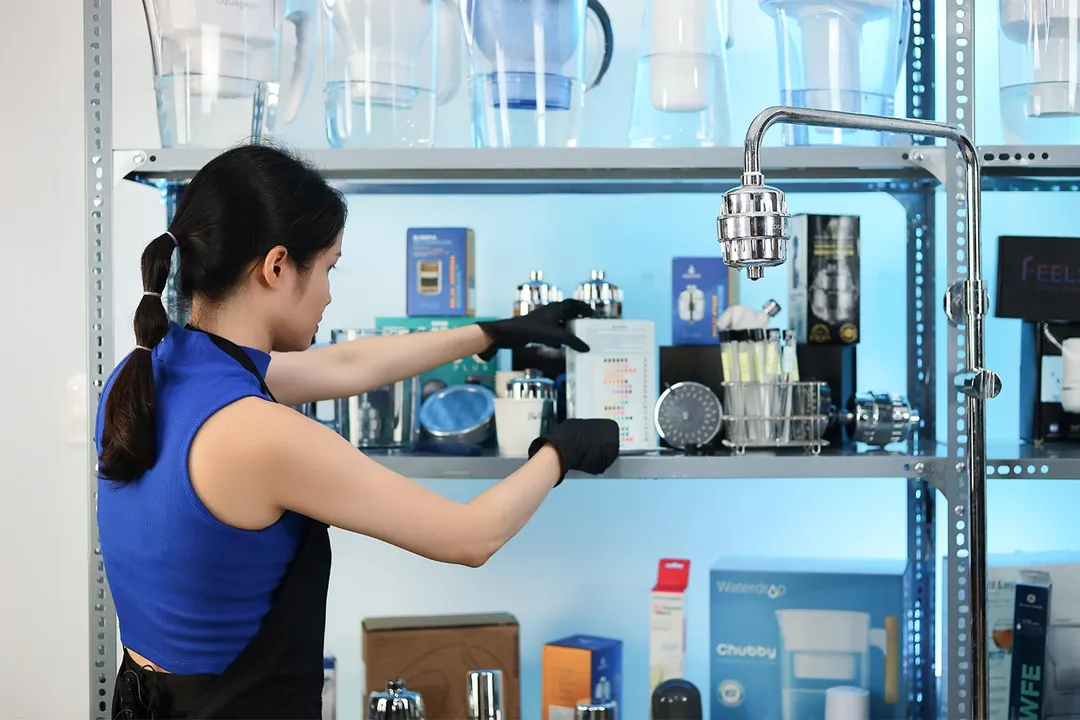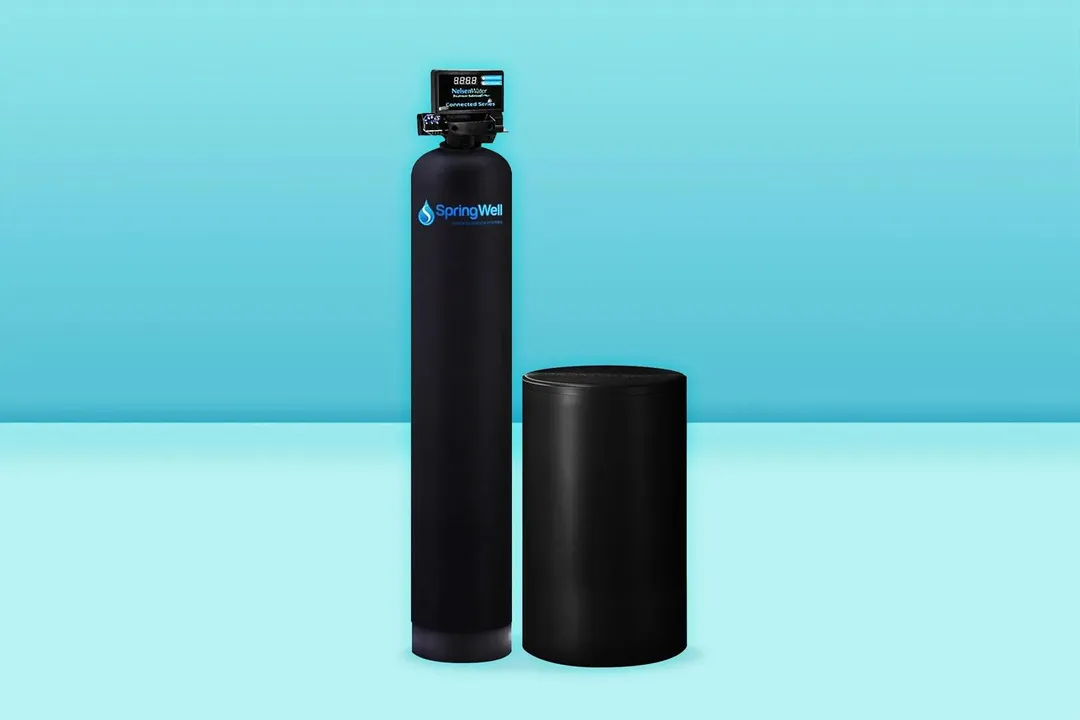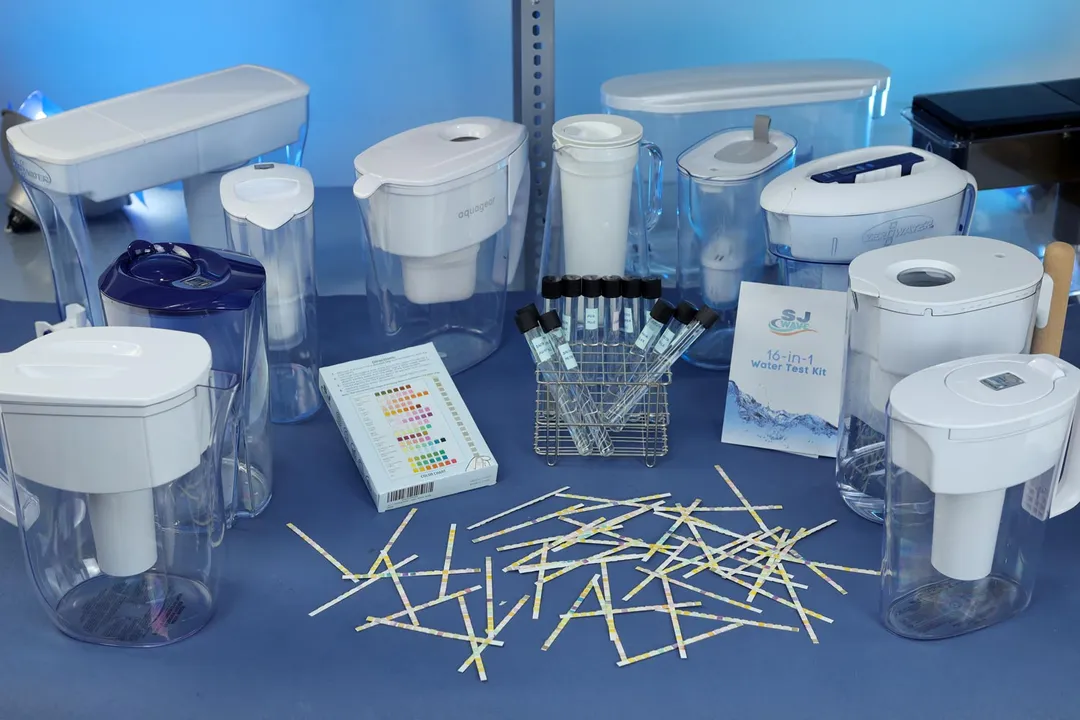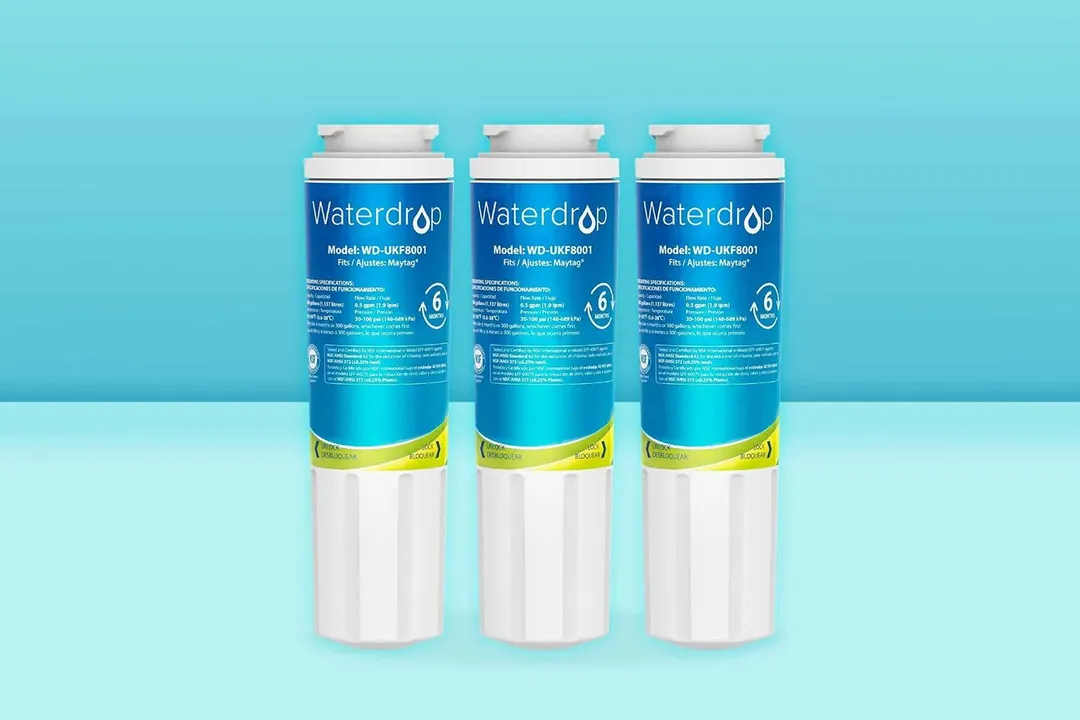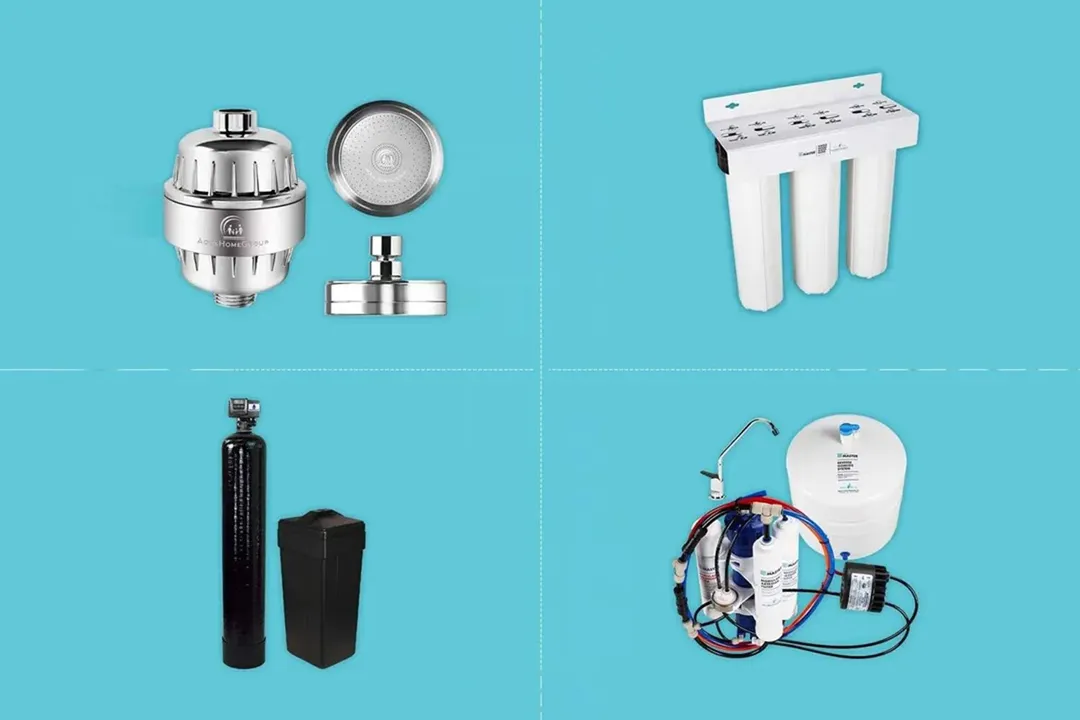Our recommendations are made independently through Research & Testing. We may receive commissions from purchases made via our links.
Common Types of Water Filters and How They Work
Learn about the pros and cons of the different types of water filters for residential use, as well as popular methods and materials used for water filtration and purification in the household.
Would a filter at the faucet is enough to bring you safe water, or should you install a water filtration system for the whole house? Would activated carbon filter work, or is UV treatment a better option? It’s difficult to find an exact answer.
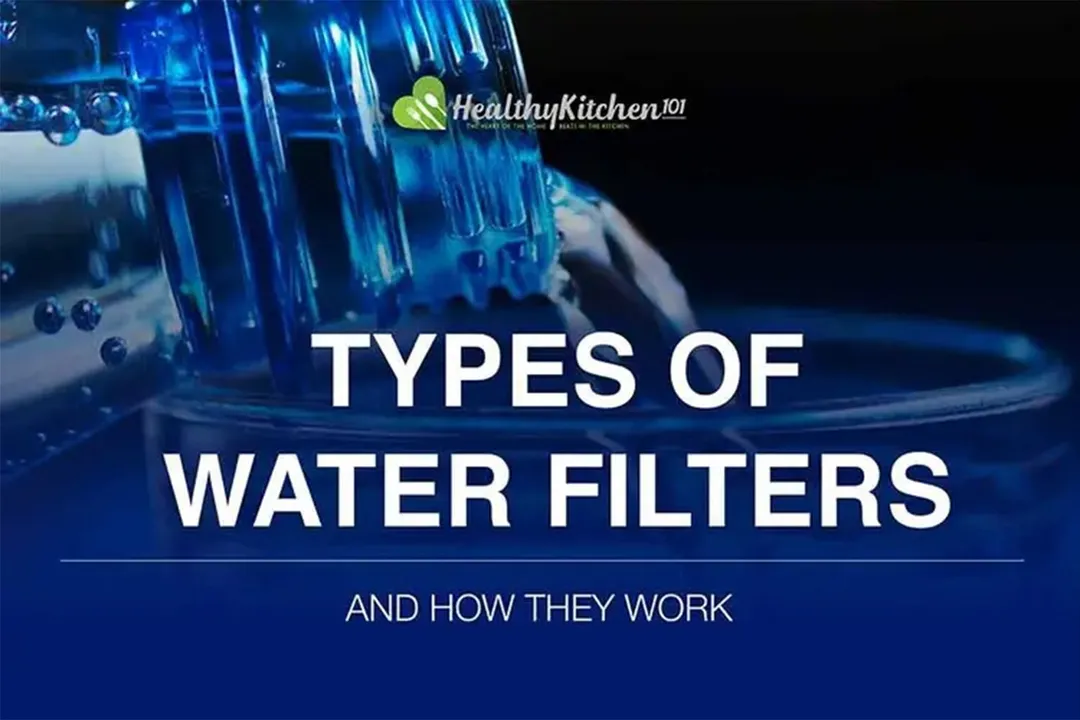
There are many factors that may influence the method of filtration and type of water filter you use in your home. Things to take into consideration include the biochemical properties of the water, water pressure, the material and specs of the pipe, and your budget, among other things. All of those differ from household to household.
This article aims at introducing to you the most common types of residential water filters. Following that is the popular methods used in water filtration and purification. We'll also discuss the pros and cons of each type so you'll have a better idea of what would be best for your home.
Related post: Best Household Water Filters Review
How Water Filters work: Popular Methods of Filtration
Each method has its own advantages and disadvantages. Most of the time, a water filtration system is a combination of two or more methods and materials.
1. Activated Alumina
Activated alumina is made of aluminum oxide (Al2O3), the same substance as sapphire and ruby without the coloring impurities.
The material is effective in removing fluoride, arsenic, and selenium from drinking water. With many pores on its surface, alumina can reduce up to 99% of fluoride concentrations in the normal fluoridated water.
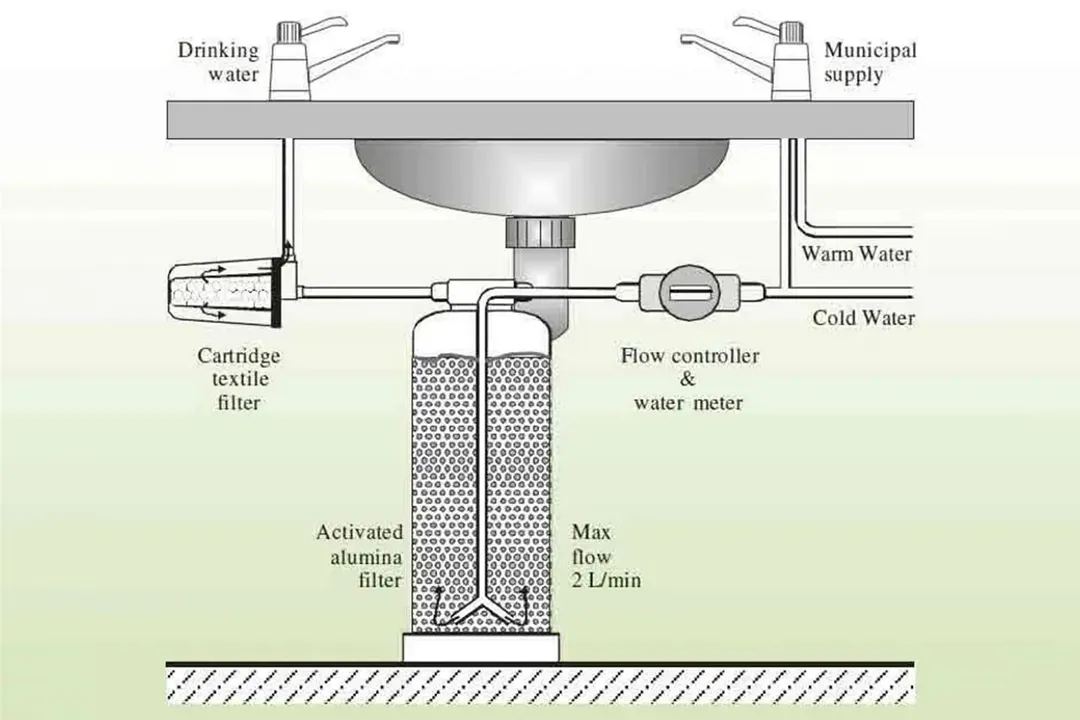
Pros
- Highly effective in removal of fluoride, arsenic, and selenium
- Cost-effective
Cons
- Possible leaching of aluminum to the water, depending on the pH level and the composition of the treated water.
2. Activated Carbon
Activated carbon, or activated charcoal, is a form of carbon that has been processed to maximize the number of pores on them. When water flows through an activated carbon filter, its pores trap the pollutant molecules inside.
Activated carbon has a large adsorption surface. The material is widely employed in water treatment to remove organic compounds or extracting chlorine from water. It can be the only medium in a pitcher, or serve as a pre- and/or post filter in under-sink and whole-house filtration systems.
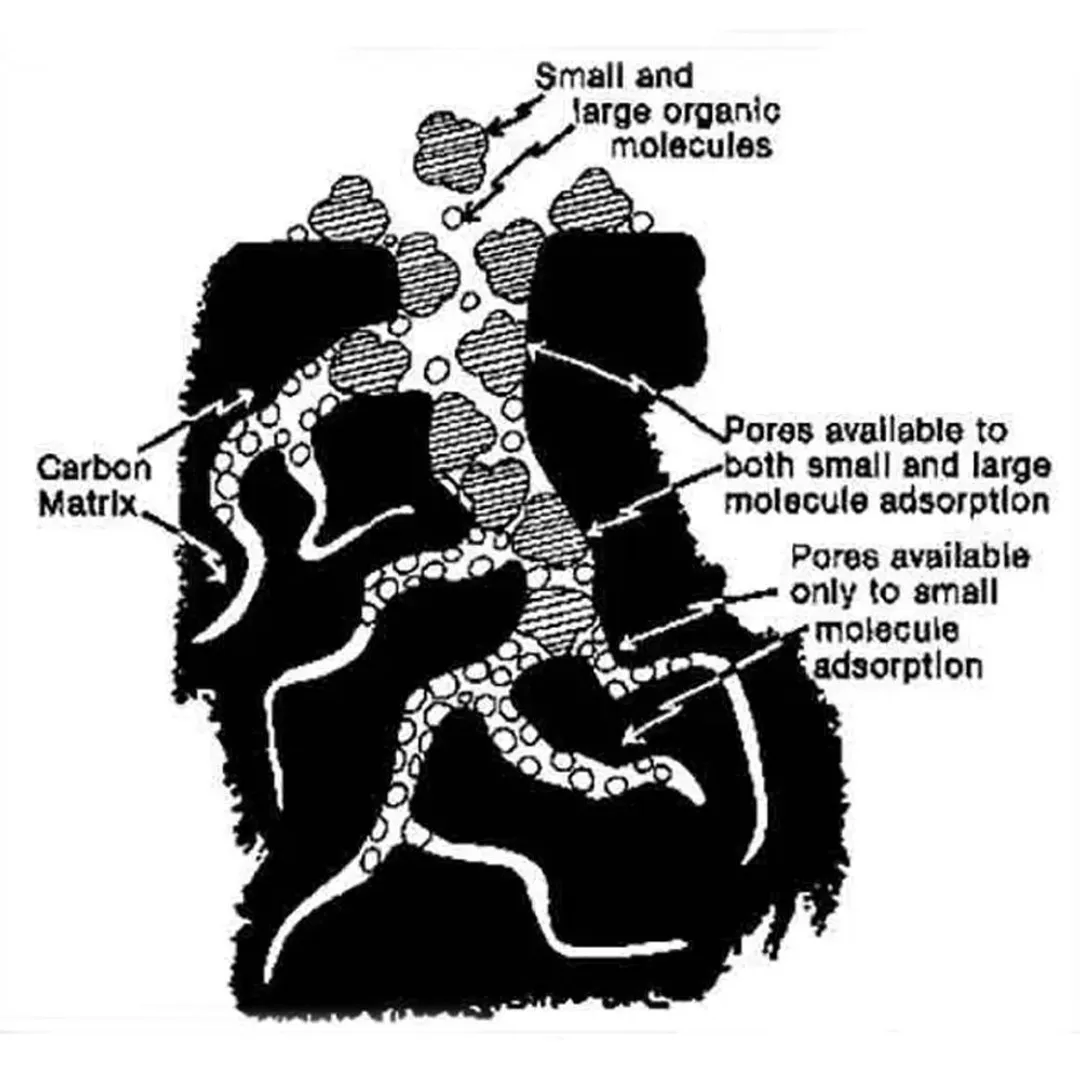
Pros
- Effective in removing chlorine, sediment, volatile organic compounds (VOCs) and improving the taste and the smell of the treated water.
- Inexpensive
- Does not require electricity to work
Cons
- Cannot remove minerals, salts, and dissolved inorganic compounds.
3. Ceramic Filters
Ceramic is a material with a lot of tiny pores on it. As water runs through the filter, these pores keeps outside anything larger than the their sizes.
Ceramic water filters are sometimes treated with silver to kill bacteria and prevent mold and algae in the water.
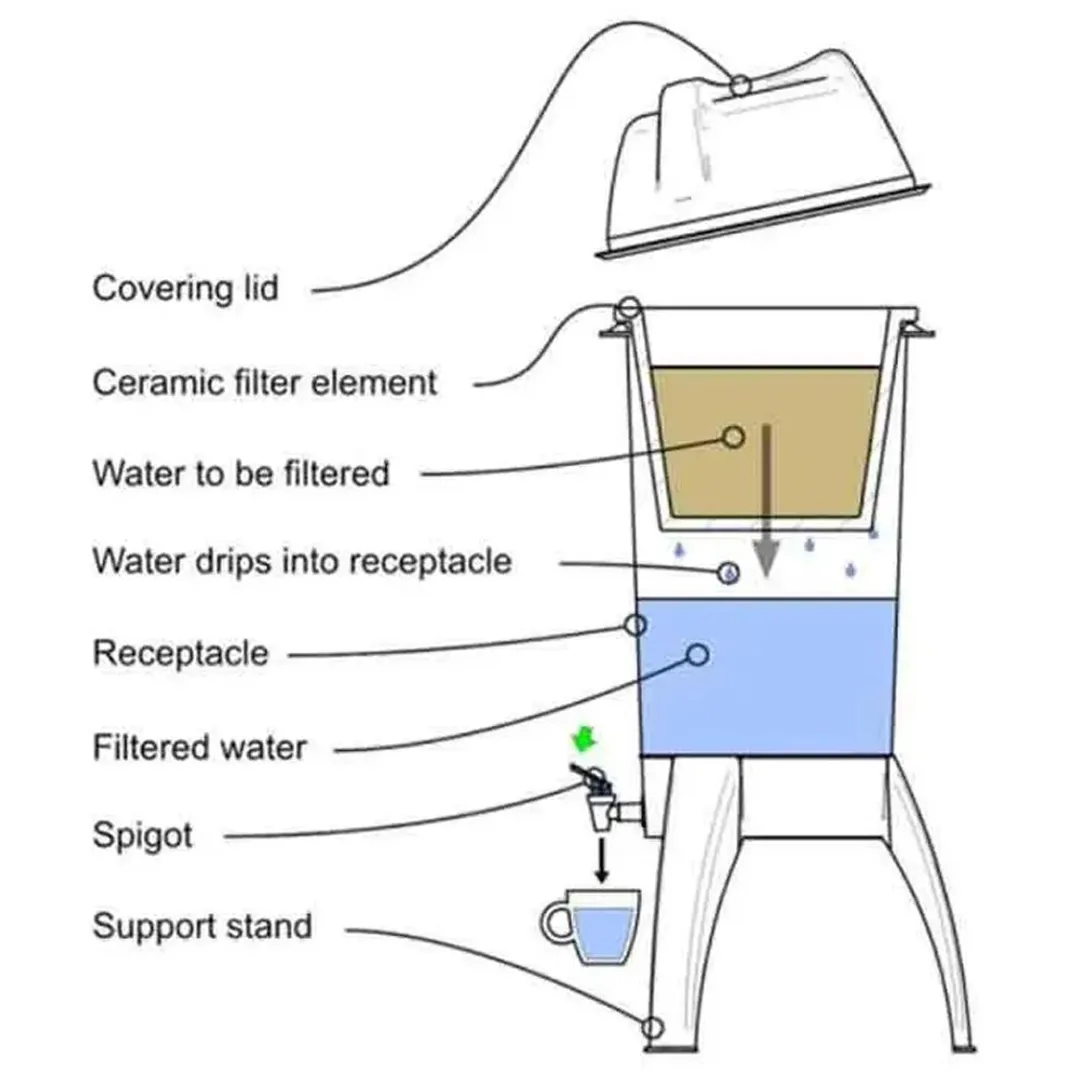
Pros
- Inexpensive, last for years
- Doesn’t require electricity
- Effective in reducing bacteria and protozoa
- Simple to set up and use
Cons
- Not effective against viruses
- Slow
4. Reverse Osmosis
Reverse osmosis is a method of water filtering in which water is forced through a membrane with small pores. These pores allow water to run through, but keep the contaminants outside, which afterward are flushed away.
Coming with pre-filters, post-filters, and reverse osmosis membranes, RO filter systems tend to cost more than other types of filter. It's rare to see them in whole-house filtration systems.
However, thanks to their high effectiveness in removing heavy metals and various harmful chemicals, they are a favorable choice among health-conscious households for under-sink and countertop filters.
Related post: Best RO Filters Review
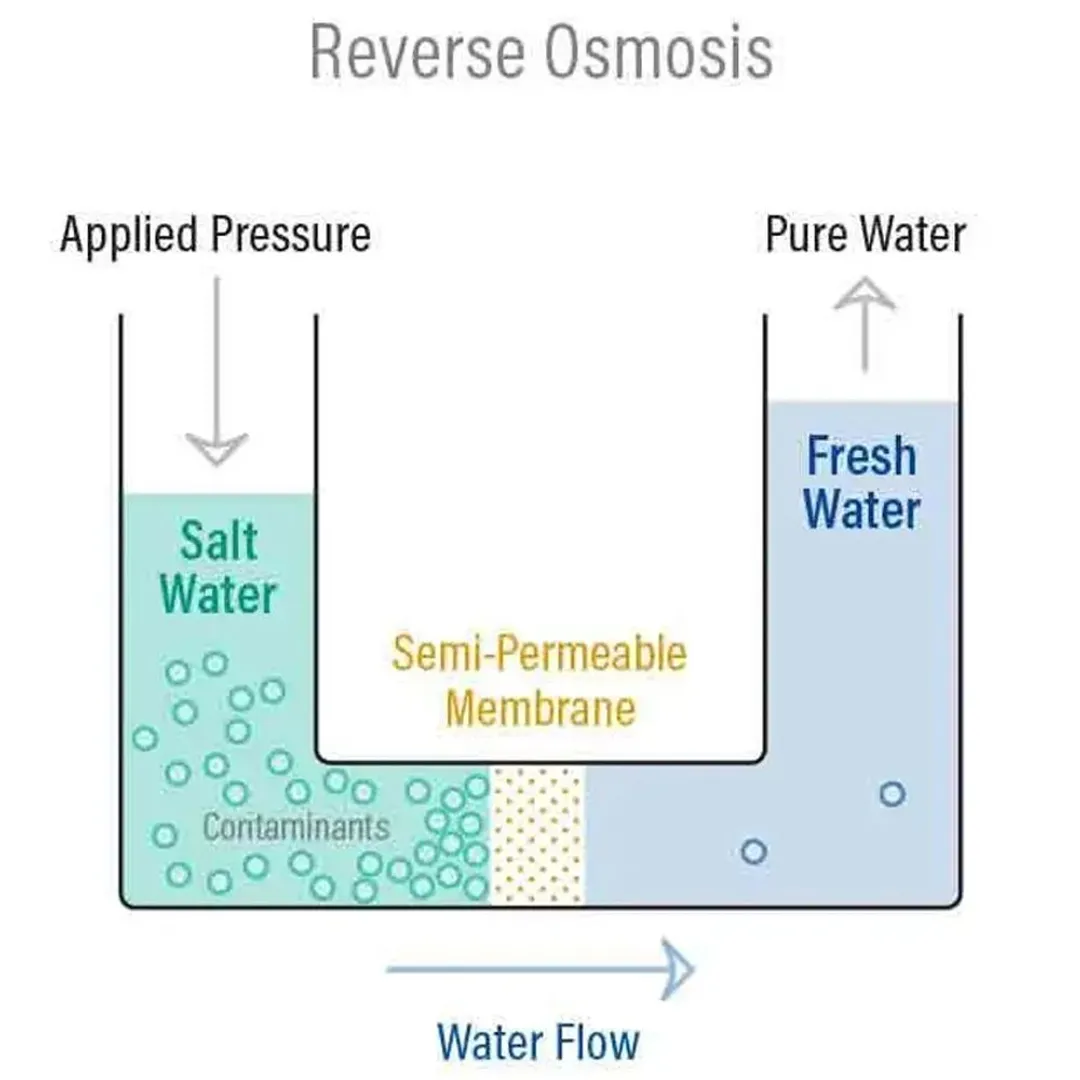
Pros
- Highly effective in removing pollutants, parasites and viruses
- Doesn’t require electricity
Cons
- Waste of water (only ⅓ to ¼ of the water is purified, the rest is wasted)
- Requires high water pressure
5. Ultraviolet Light
UV water purifying systems use light of a high frequency to irradiate water through a glass element. As water passes through the element, the light inactivates and kills living microorganisms by damaging their cellular function.
UV light is one of the safest and most effective ways to treat virus, bacteria, and protozoa in water. That being said, it has its weaknesses: non-organic contaminants can obstruct the light, deeming it ineffective. The light may fail to deliver the desired results when working on water with high concentrations of sediments and pollutants.
For this reason, UV lamps rarely stand alone as a purifier. It works best as the final stage in a system to treat microorganisms in water that's been filtered and has become clean and clear.
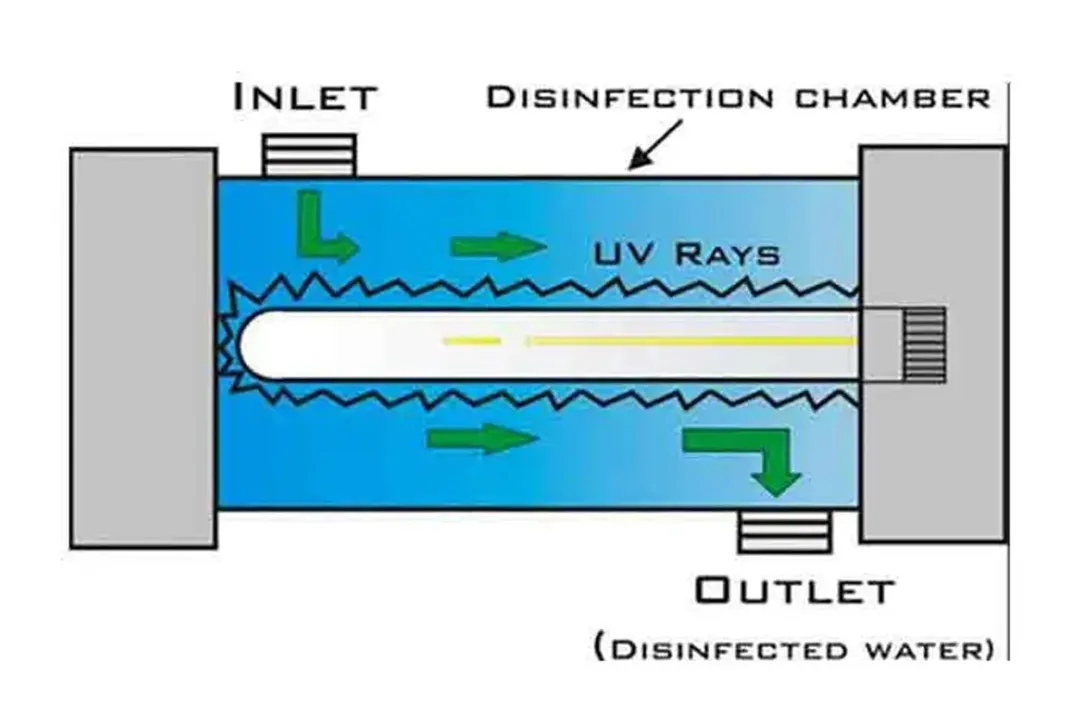
Pros
- Kills parasites, bacterias, and viruses
Cons
- Expensive
- Needs energy to operate
- Doesn’t remove non-living contaminants (minerals or fluoride)
6. Distillation
Distillation is a process of water purification with very high efficiency. During this process, water is boiled into steam, which is then cooled down to the form of liquid and is collected in a clean container.
In the household scale, we usually employ this water treatment method in countertop distillers to make drinking water for small families.
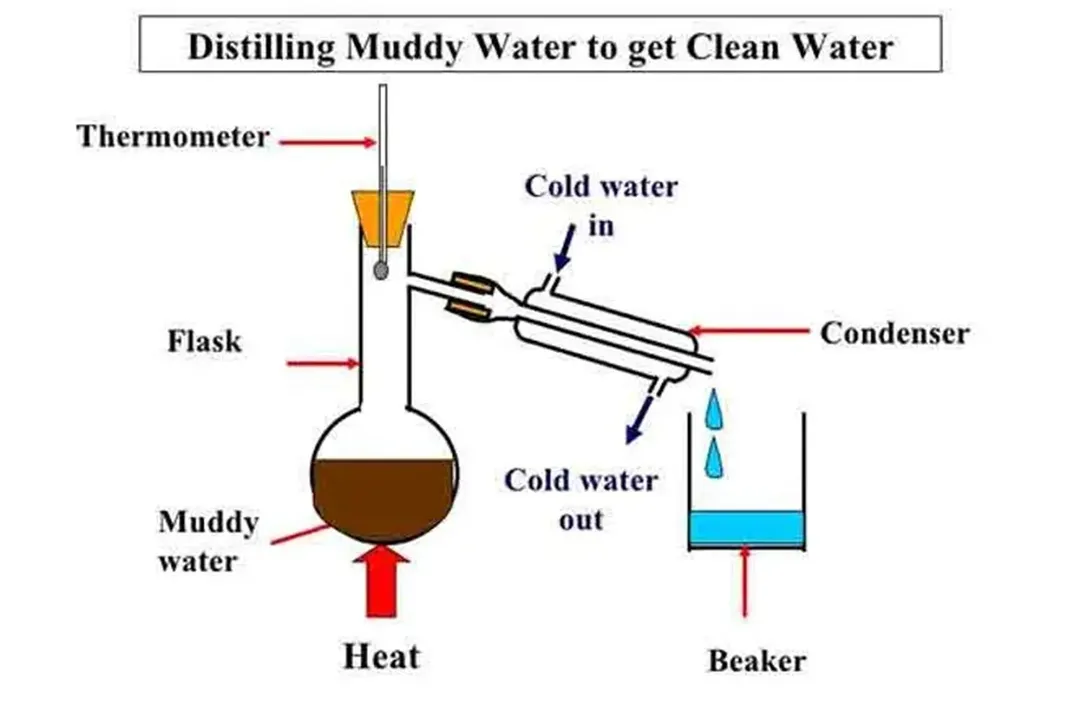
Pros
- Removes most contaminants. Kills bacteria.
- Improves taste and smell of the treated water
- No replacement needed
Cons
- Very slow. Takes long hours to produce a small amount of pure water.
- Requires electricity to work
Types of Water filters and Purifiers for Residential Use
The most frequently seen water filters in American homes.
1. Water Filter Pitcher
Thanks to their low cost and portability, water filter pitchers are among the most common types of water filters used in households.
A typical water filter pitcher has two parts. At the center of the upper half is a filter filled mostly with activated carbon, where you will pour water in to be treated. The filtered water will drop down to the lower part of the container, and you can pour it out for use from there.
Due to their limited capacity, water filter pitchers are mainly used to purify tap water for drinking and cooking. They’re also a safe and convenient way to get clean water when you’re outdoors, on a camping trip for example.
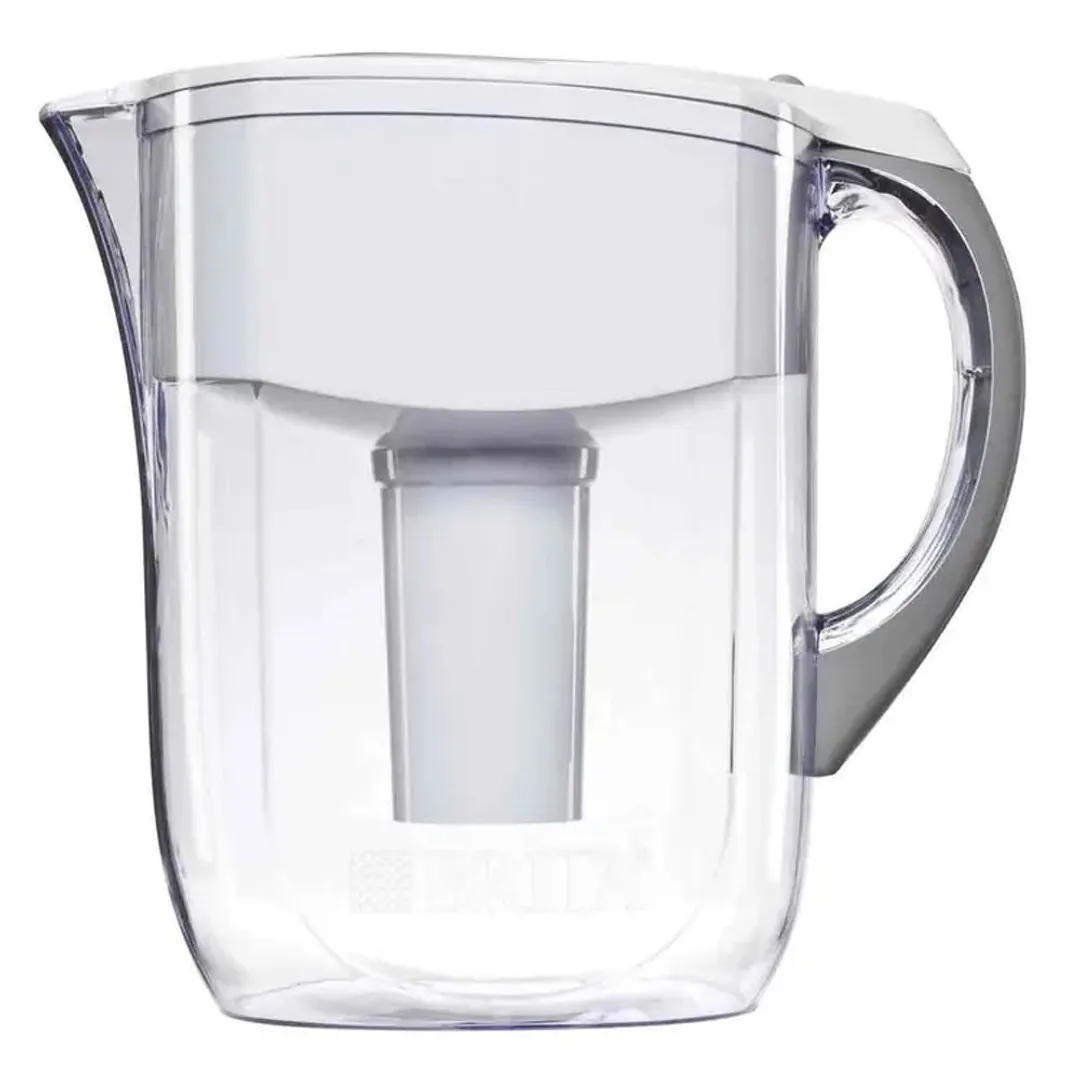
Pros
- Low cost
- Can remove lots of chemicals and minerals in water
- Portable
- Easy to use
Cons
- Slow. Confined capacity – you need to pour water in and wait for it to work.
Related post: Best Water Cooler Dispensers in 2023
2. Faucet Water Filter
As its name suggests, this is a small device you install right on your faucet. It removes the contaminants in the water right before it comes out, leaving you with fresh water for cooking and washing.
Faucet water filters are generally inexpensive, making them a popular choice in the households. They’re best at improving the smell and the taste of tap water in areas where the water is relatively already safe and clean.
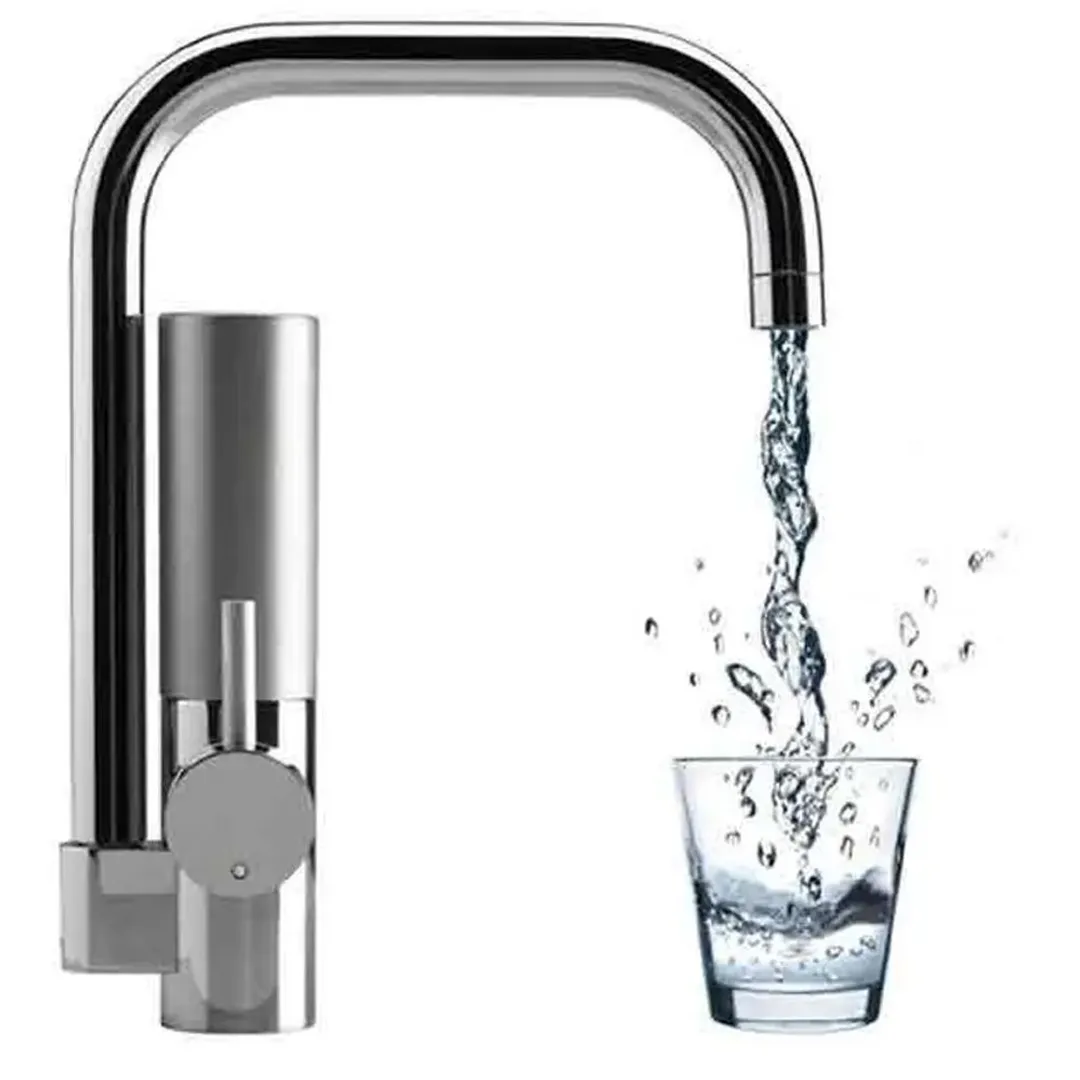
Pros
- Small, inexpensive
- Convenient, no need to constantly fill water
- Easy to install
Cons
- Slows the flow down significantly
- May not work with low faucet
Related post: 5 Best Faucet Water Filters in 2023 Tested and Reviewed
3. Showerhead Filter
Similar to faucet filter, this is a device you install on your shower head to filter the water for your shower. Sometimes, the filter comes with a shower head itself.
Filters for shower head are advised for areas where the water contains a rich amount of chlorine and fluoride, which are known to cause dryness and irritations to individuals with sensitive skin. Many users reported they feel reduced hair loss and a smoother skin after the filter is installed in their bathroom.

Pros
- Removes simple contaminants, improves hair and skin
- Inexpensive
- Easy to install
Cons
- Slow flow
4. Countertop Water Filter
Countertop water filters are a slightly better choice when you want to purify your tap water without having to keep filling and emptying a jug. They are small devices connected to the faucet, purifying water as you turn the tap on. A countertop filter may sometimes come with its own faucet.
Most countertop filters have a small footprint. Still, they do take up some space on your countertop and are thus less favored at households with a narrow countertop.
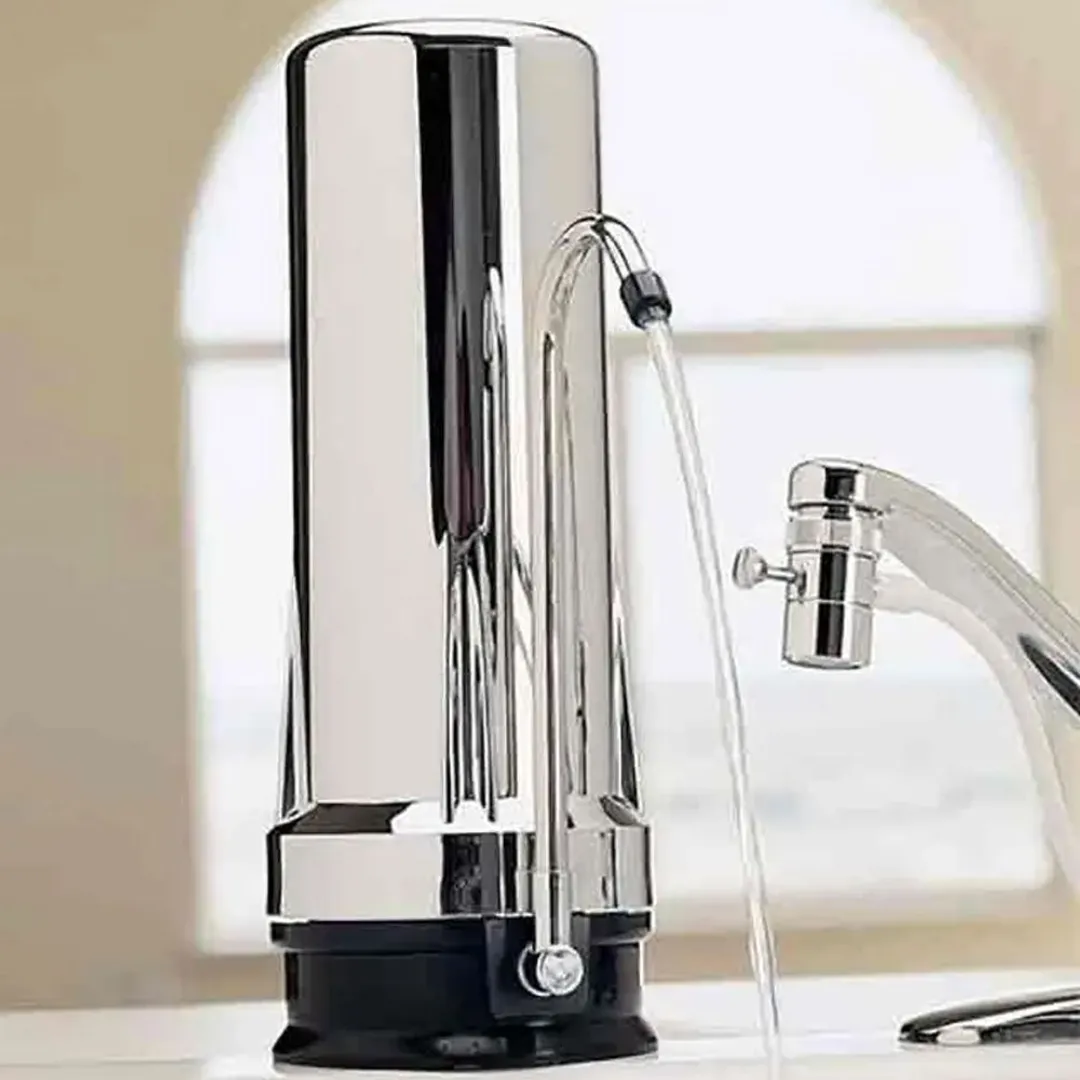
Pros
- Fast. Filters water as you turn the tap on
- Middle-ranged price
- More filtration than faucet filter
Cons
- Takes countertop space
5. Under Sink Water Filter
An under-sink water filter is typically a water filtration system installed under the sink in your kitchen. It removes bacteria and pollutants, making the water safer to use.
Under-sink water filters are usually bulky, expensive, and are not very portable. However, they can process a larger amount of water at a much faster rate compared to faucet or countertop devices.
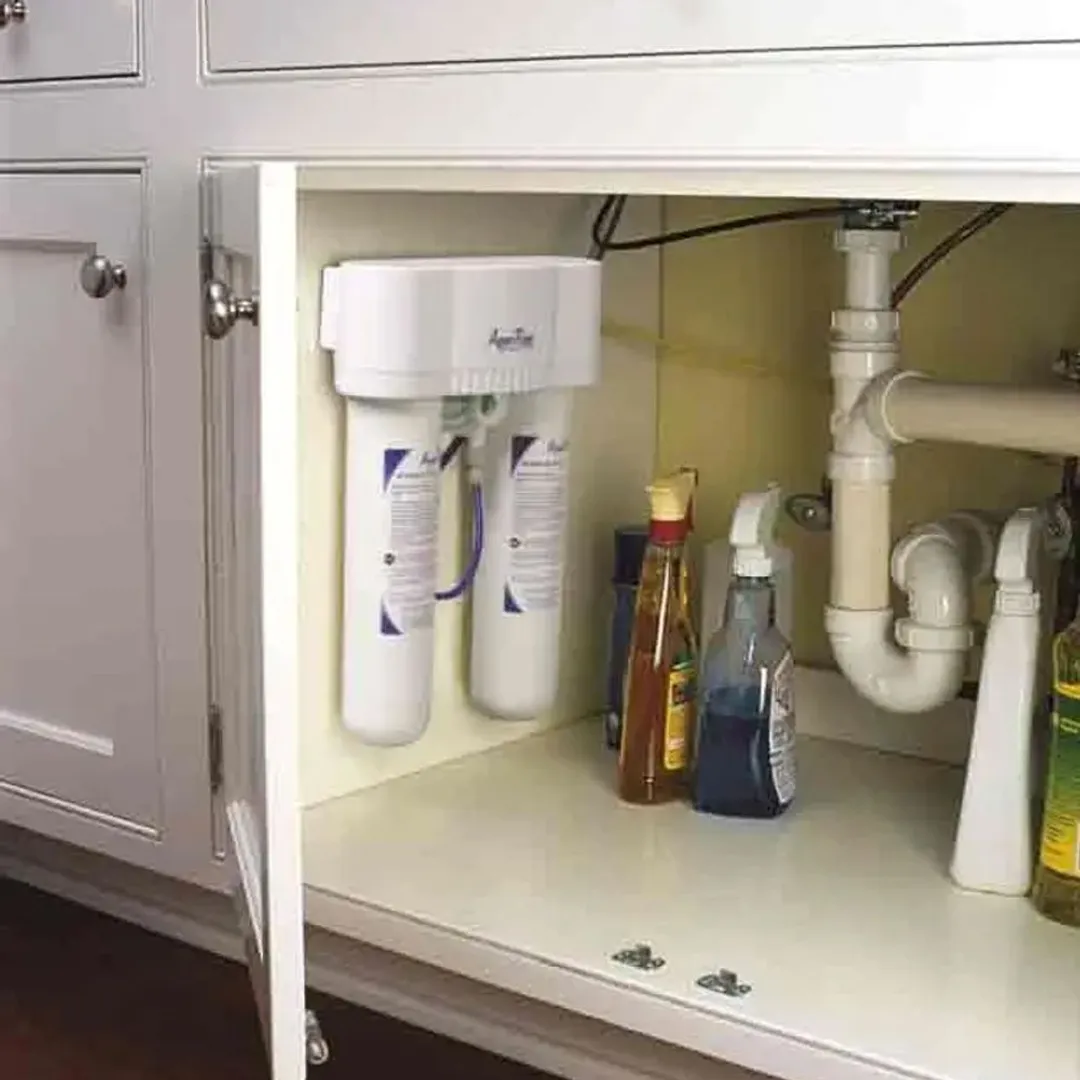
Pros
- Large, treat more water within a short time
- Usually hidden under the sink, not visible
- Can filter more different kinds of contaminants
Cons
- Expensive
- Difficult installation
Related post: Top Under Sink Water Filters Of 2023 Review
6. Whole House Water Filter System
Whole house water filter systems are usually seen in households where tap water is not an option. They’re typically installed right at the water tank, connecting to the main pipe, purifying the water before it is distributed to different areas in the house.
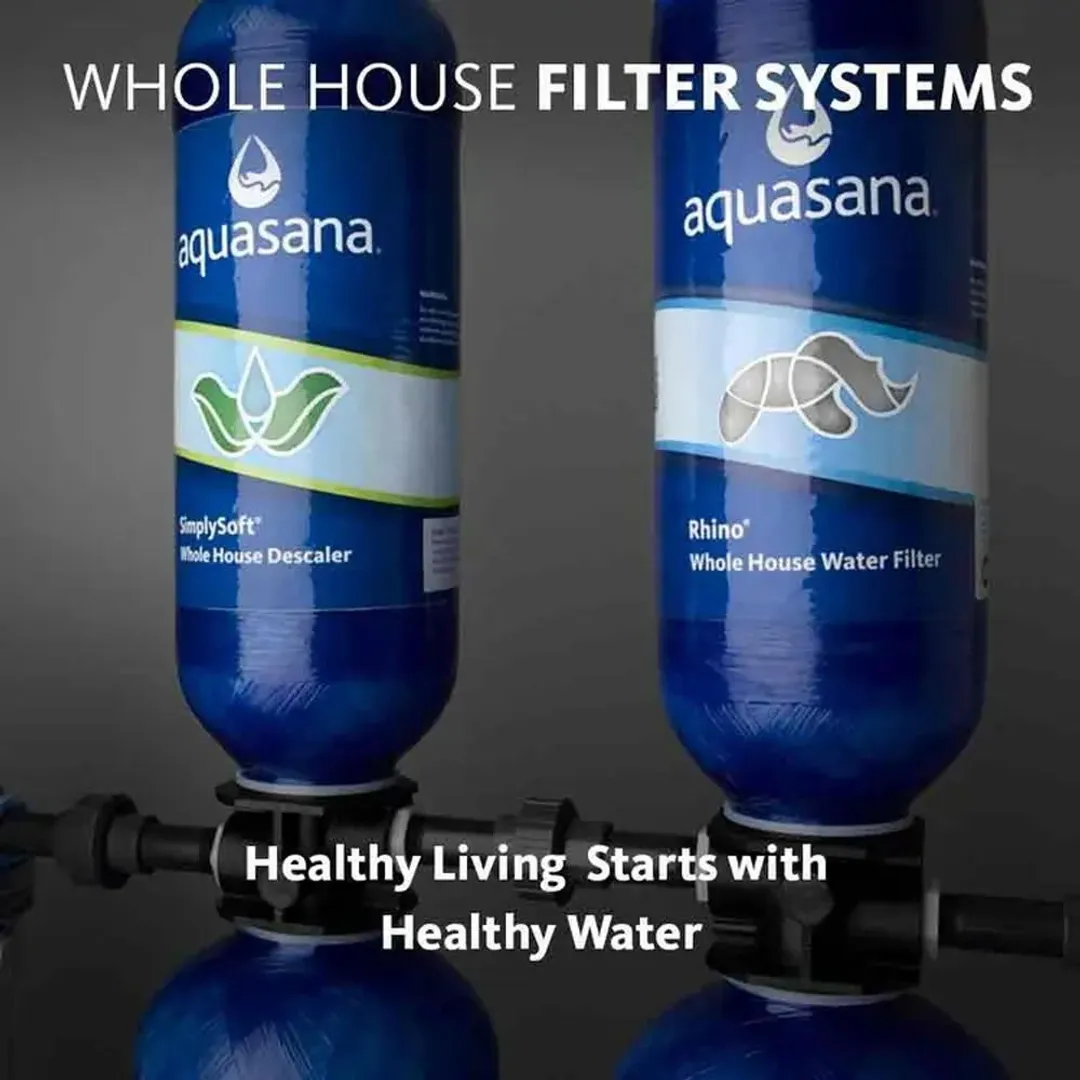
Pros
- Filters water right at the main pipe. No need to find filters for different taps/sources in the house
- Large system effectively removes various contaminants
- Saves money on clean water in long term
Cons
- Expensive
- Needs professional installation
What kind of water filtration are you using in your home? Does it improve the smell and the taste of your water? Share your experience with us.
About your tip
Luna Regina is an accomplished writer and author who dedicates her career to empowering home cooks and making cooking effortless for everyone. She is the founder of HealthyKitchen101.com and HealthyRecipes101.com, where she works with her team to develop easy, nutritious recipes and help aspiring cooks choose the right kitchen appliances.

